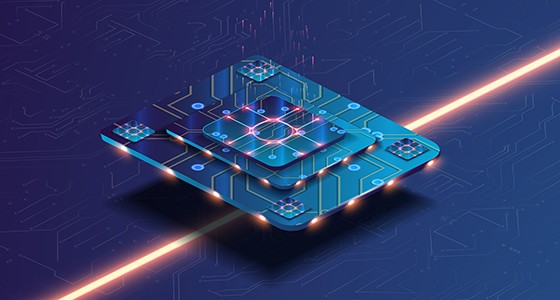Quantum annealing, a subset of quantum computing, offers a promising solution to optimization problems, opening new horizons in computational capacities. This technique harnesses the principles of quantum mechanics to find the minimum (or maximum) of a function, a task crucial in fields such as finance, logistics, and machine learning.

What is Quantum Annealing?
Quantum annealing is inspired by classical annealing, a physical process wherein a material is heated and then slowly cooled to remove defects, thereby minimizing its energy. Similarly, in computation, annealing algorithms try to find the minimum of a cost function. Quantum annealing speeds up this search using quantum superposition and tunneling [1].
Quantum Mechanics Fundamentals
Two foundational principles of quantum mechanics are at play in quantum annealing:
- Superposition: Unlike classical bits (0 or 1), quantum bits or qubits can exist in a state that is a superposition of both 0 and 1. This allows a quantum system to explore many possible solutions simultaneously.
- Quantum Tunneling: Quantum tunneling lets particles move through barriers instead of going over them. In terms of optimization, this means a quantum system can "tunnel" through barriers to find the solution, avoiding getting stuck at local minima [2].
Quantum Annealing vs. Gate-Based Quantum Computing
While both are subfields of quantum computing, quantum annealing and gate-based (or circuit-based) quantum computing have distinct approaches. Gate-based quantum computing modifies qubits in steps using quantum gates, much like how classical computing uses logic gates. In contrast, quantum annealing is designed specifically for optimization problems and doesn't involve gate operations [3].
Applications of Quantum Annealing
Given its optimization prowess, quantum annealing has numerous applications:
- Optimization in Logistics: Tasks such as the traveling salesman problem, where one needs to find the shortest possible route that visits several cities and returns to the origin city, can potentially benefit from quantum annealing.
- Financial Modeling: Portfolio optimization, where one needs to balance stock investments to minimize risk while maximizing return, is another suitable problem for quantum annealing.
- Machine Learning: Feature selection, clustering, and certain neural network operations are optimization problems where quantum annealing might speed up solutions [4].
D-Wave and Quantum Annealing
One of the leading companies in the quantum annealing domain is D-Wave. Their quantum annealers have been at the forefront, with businesses and researchers using them for various optimization tasks. D-Wave's approach, often termed as "adiabatic quantum computing," gradually transforms a quantum system from an initial to a final Hamiltonian, helping find the ground state, i.e., the solution to the optimization problem [5].
Challenges in Quantum Annealing
- Noise and Decoherence: Quantum systems are extremely sensitive to external disturbances, causing qubits to lose their quantum state.
- Limited Scalability: The connectivity between qubits, essential for many problems, remains a challenge, especially as systems scale up.
- Complexity: Quantum annealing might not guarantee faster solutions for all problems. Its true potential is still under investigation, with a need for more algorithms tailored to its strengths [6].
The Road Ahead
The journey of quantum annealing is still in its early stages. While there's palpable excitement about its potential, researchers continue to explore more efficient algorithms, better hardware, and wider applications. With quantum supremacy, a point where quantum computers outperform classical supercomputers, recently being claimed, it's an exciting era for quantum annealing and quantum computing as a whole [7].
References
[1] Farhi, E., Goldstone, J., Gutmann, S., & Sipser, M. (2000). Quantum computation by adiabatic evolution. arXiv preprint quant-ph/0001106.
[2] Albash, T., & Lidar, D. A. (2018). Adiabatic quantum computing. Reviews of Modern Physics, 90(1), 015002.
[3] Nielsen, M. A., & Chuang, I. L. (2010). Quantum computation and quantum information. Cambridge University Press.
[4] Amin, M. H. (2015). Searching for quantum speedup in quasistatic quantum annealers. Physical Review A, 92(5), 052323.
[5] Johnson, M. W., Amin, M. H. S., Gildert, S., Lanting, T., Hamze, F., Dickson, N., ... & Anderson, J. B. (2011). Quantum annealing with manufactured spins. Nature, 473(7346), 194-198.
[6] Das, A., & Chakrabarti, B. K. (2008). Quantum annealing and analog quantum computation. Reviews of Modern Physics, 80(3), 1061.
[7] Arute, F., Arya, K., Babbush, R., Bacon, D., Bardin